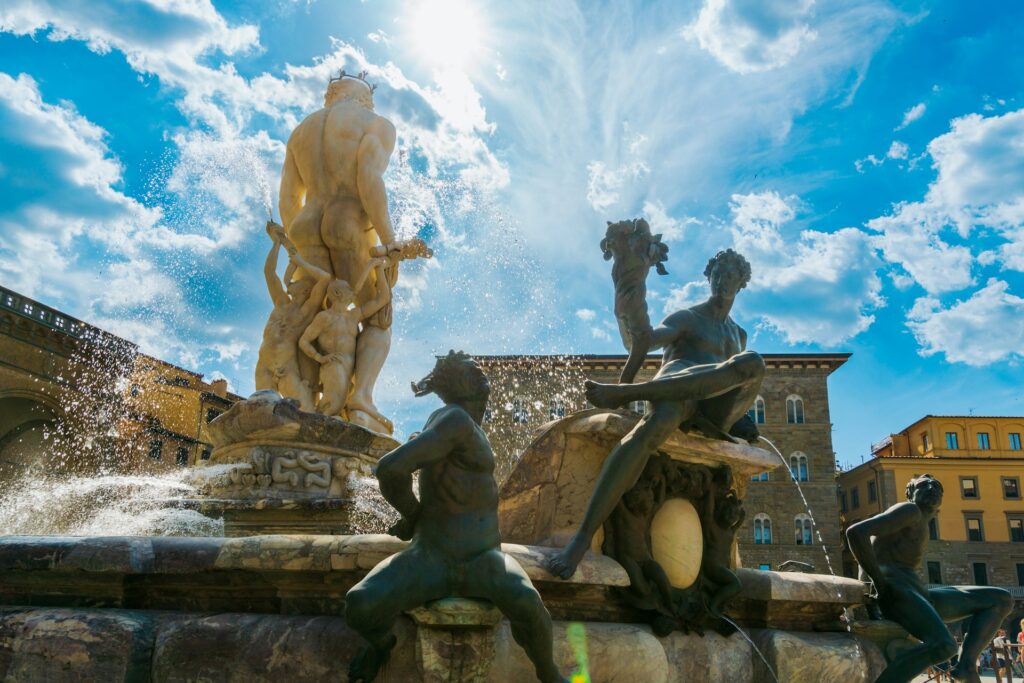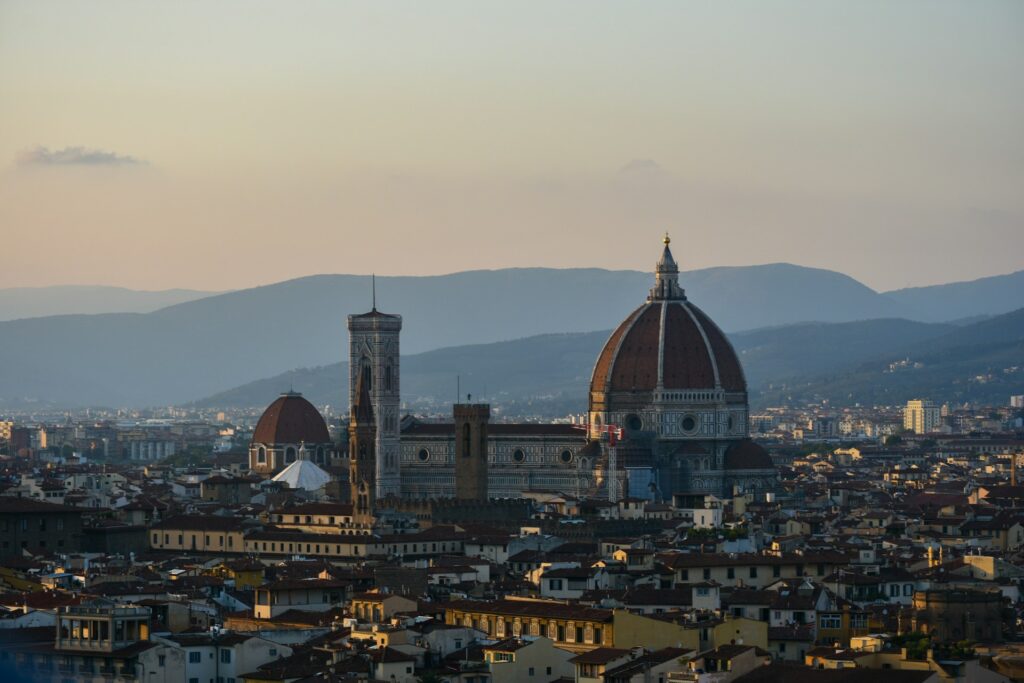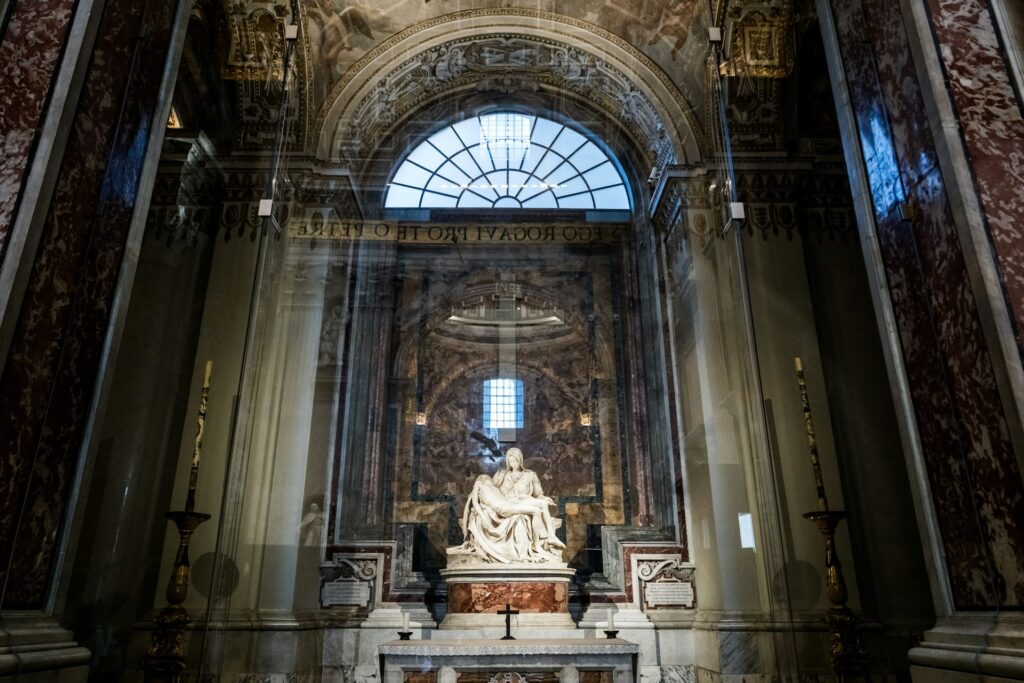Italy is not just a place to visit—it’s a place to feel. Every piazza, fresco, and church bell seems to carry centuries of stories, yet life continues to hum around them in the present day. Nowhere is this blend of old and new more captivating than in Florence and Rome, two cities that share the genius of Michelangelo and the treasures of the Renaissance. Travelling between them is not simply a journey—it’s a cultural pilgrimage.

Linking Italy’s Cultural Capitals
Italy’s railway makes exploring all of this refreshingly simple. The Milan to Rome train connects the fashion capital with the Eternal City in just a few hours, often with a cultural pause in Florence along the way. These journeys stitch the country together, offering not only convenience but also the joy of watching Italy’s landscapes roll by: vineyards, medieval towns, and wide plains unfolding outside your window.
Florence: Where the Renaissance Began
Florence doesn’t just showcase art—it breathes it. The Duomo towers over the city, its great dome impossible to ignore, while sunlight glints off the Arno River and cobbled streets wind their way past bustling cafés and artisan shops. At the Uffizi Gallery, paintings like Botticelli’s Birth of Venus still glow with colour, pulling visitors into the heart of Renaissance imagination.
But Florence’s magic is not only in its museums. It’s in the way shadows fall across Piazza della Signoria at dusk, in the murmur of locals gathered for espresso, in the hushed awe that comes from standing before Michelangelo’s David. Every corner whispers a reminder that this is where ideas once changed the course of European history.
Today, moving between Florence and Rome is effortless thanks to the Florence – Rome train. A journey that once took days now takes just hours, connecting two of Italy’s most cultural powerhouses with speed and comfort, while allowing travellers to see rolling vineyards and sunlit hillsides rush by along the way.

Michelangelo’s Florence
Florence reveals Michelangelo at the beginning of his career: daring, ambitious, and brimming with energy. His David is not just a statue—it’s a symbol of civic pride, standing taller than life and charged with intensity. In the Medici Chapels, his sculptures are filled with tension and emotion, hinting at the genius that would later reach new heights in Rome.
The city carries his spirit everywhere. From church façades to quiet workshops, it feels like the very stones of Florence still hum with his restless creativity.
Rome: Layers of Culture and Faith
Where Florence is intimate, Rome is monumental. Arriving in the Eternal City feels like walking through a timeline—ancient ruins, Renaissance palaces, and modern piazzas all blending together. At the Vatican, Michelangelo’s genius reaches its most famous expression. The Sistine Chapel ceiling is a swirl of drama and beauty, every inch alive with movement, from God’s outstretched hand touching Adam’s to the tumult of the Flood.
Then there’s the Last Judgement, which covers the altar wall with such raw intensity that even today it can feel overwhelming. Beyond Michelangelo, the Vatican Museums unfold mile after mile of treasures, while St. Peter’s Basilica rises as a masterpiece of architecture, crowned with Michelangelo’s dome.
But Rome isn’t only grand. In Campo de’ Fiori, vendors pack up their fruit stalls as twilight settles in, and nearby trattorias fill with the sound of laughter and the aroma of simmering sauces. Rome is both extraordinary and everyday, and that’s its charm.

Michelangelo’s Thread Between Cities
What ties Florence and Rome so closely together is not just geography but Michelangelo himself. In Florence, he was the fiery young artist redefining what sculpture could be. In Rome, he became the master who painted the heavens and left behind a vision of faith and humanity that still astonishes. His life and works connect the two cities like a thread, binding their cultural legacies into a single story.
Living the Journey
Travelling between Florence and Rome isn’t only about standing in front of masterpieces—it’s about experiencing the rhythm of Italian life. It’s sipping cappuccino in a sunny piazza before catching a train, or stumbling upon a street musician in a Roman square. It’s sharing pasta and wine at a family-run trattoria, and feeling that art and culture aren’t locked away in galleries but flow through daily life.
This is what makes Italy irresistible: the ability to step into history and still feel entirely present.
Conclusion: A Journey That Lingers
To stand before Michelangelo’s David in Florence and later crane your neck beneath the Sistine Chapel in Rome is to trace a story of genius across two cities. But what stays with you is not just the art—it’s the emotion it stirs. The hush of a gallery, the quiet awe of a chapel, the warmth of sunlight on old stone, and the taste of gelato savoured on a late-night stroll.
Florence and Rome, linked by trains, by history, and by the hand of Michelangelo, are more than destinations. They are living reminders that creativity endures, that beauty still matters, and that culture is best experienced not with your eyes alone, but with your heart.
